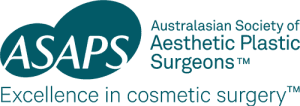Study puts Cancer Risk due to Breast Implants into Perspective
- Posted on
A global team of leading plastic surgeons have had a paper published this week in the prestigious Plastic and Reconstructive Surgery Journal, which creates hope that there are simple ways to reduce the risk of breast implant associated-Anaplastic Large Cell Lymphoma (BIA-ALCL).
The Australasian Society of Aesthetic Plastic Surgeons Board President and Co-Chair of a Joint Task Force of Specialist Plastic Surgeons investigating BIA-ALCL, Dr Mark Magnusson said today, “Following recent news stories there has been quite a bit of interest in BIA-ALCL with concern especially from patients about their future risk.
“This latest study investigating outcomes in breast implant surgery has given us a little bit of reassurance. Previous research by members of our group shows that different implants have different chances of developing BIA-ALCL, as was reported last weekend with an emphasis on high surface area textured implants having a risk of one in 4,000 patients developing BIA-ALCL.
“With those rates, however, we are looking at the whole community of people who have implants. We have also detected bacteria intimately associated with a tumour, and there is accumulating evidence that they are involved in the development of the disease. If this is the case, antimicrobial strategies could reduce the risk. It makes sense.
“This new research was a collaboration by eight surgeons worldwide including three Australian Plastic Surgeons who routinely apply a group of bacterial mitigation strategies at the time of implant surgery called the ’14-point-plan’. The 14-point-plan is designed to minimise the number of bacteria that can contaminate breast implants at the time of surgery. We have collected 42,000 of these high surface area implants followed for an average for 11.7 years and found no cases of ALCL; this is far fewer than the anticipated ten patients at a rate of one in every 4,000.
“This is reassuring because our research suggests that good surgical technique may be one of our best weapons against this problem,” Dr Magnusson said.
Dr Mark Magnusson said this new finding reaffirms the reason why people who want cosmetic surgery need to seek out a Specialist Plastic Surgeon, who practices in an accredited facility and who is supported by a team with appropriate qualifications, such as registered nurses and specialist anaesthetists.
“Over the last few days, we’ve seen the absolute tragedy unfolding in Sydney with a life taken at the hands of someone performing a procedure outside the regulations that are designed to ensure patient safety.
“It’s important when selecting a surgeon to ensure the person is fully qualified with expertise in aesthetic surgery. ASAPS members are fully qualified Specialist Plastic Surgeons from Australia and New Zealand who are Fellows of the Royal Australasian College of Surgeons (FRACS), with expertise, experience and ongoing education in aesthetic surgery. In Australia, the registration of a Specialist Plastic Surgeon is available on the government’s AHPRA website. A Specialist Plastic Surgeon will have Specialist Registration specialising in Plastic Surgery,” Dr Magnusson said.
For more information and to find ASAPS surgeon visit asaps.org.au.
Ends
Media contact: Julia Power, National PR and Marketing Manager, 0414 276 990
Australasian Society of Aesthetic Plastic Surgeons has been one of the peak bodies for cosmetic surgery in Australia and New Zealand for 40 years. We are committed to making sure you receive the best advice, find an appropriately qualified aesthetic plastic surgeon and experience world-class treatment before, during and after your surgery.
ASAPS Members have 8 to 12 years of specialist surgical training beyond their medical degree. Surgeons with this level of training are easy to identify because they have FRACS after their name. Each of our members is committed to helping you achieve your cosmetic goals in a safe and caring environment, every step of the way.
